Create an inventory item that is classified as track count or other perpetual inventory classification. This track count item will be identified as the main item for this documentation. See Product Catalog > Entering New Products for more details on creating a track count item.
Create a second inventory item that will be associated with
the first main item described in step 1. This item must be classified
as No Count. Review the Product Catalog > Item Classifications
for more details on inventory classifications. Launch the new inventory
item wizard and complete the following steps:
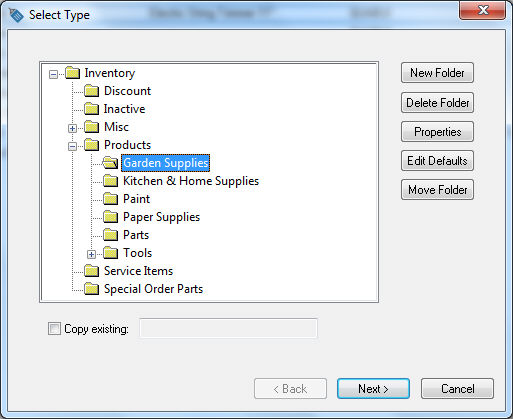
Select the desired folder and click Next. Review the Product Catalog > Adding and Deleting Inventory Folders for more details.
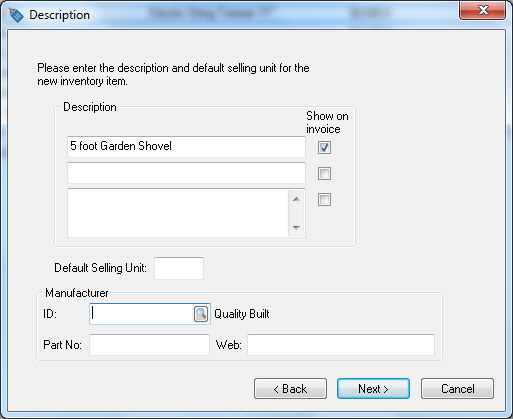
Enter a description for the associated item. Note that the description must be entered for the associated item and can not be copied from the main item. Press Next to continue.

The Classification of the associated item MUST be No Count since the inventory is not maintained in this item but the main item. The Purchase method and Gross Weight do not apply on the associated item record. Click Next to continue.

The cost amount can be ignored since the cost is copied from the main item. The Markup setting can be set to From Component Base Prices as shown above if the associated item's Base Price should equal the price of the main item. The price Formulas can be calculated from the cost, calculated from the Base Price, or using the price Formula for each price level. Review the pricing options in the Pricing > Price Formulas section of the documentation. Click Next to continue.
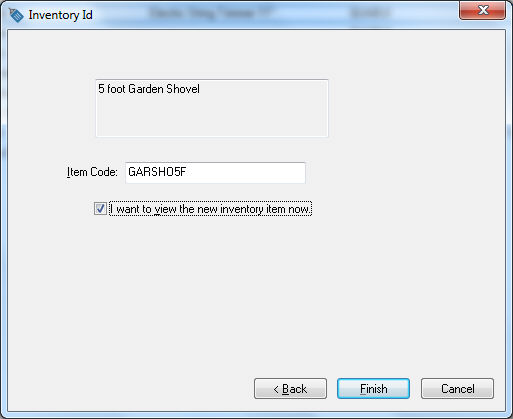
Enter an Item Code for the associated item. Note that this code must be unique and can not be the same as the main item. Enable the I want to view the new inventory item now option so that we can associate the item immediately. Click Finish to open the inventory record as shown below.
Click on the Components tab to add the associated item.
Click on the New button to associate the main item by adding the item to the component list.
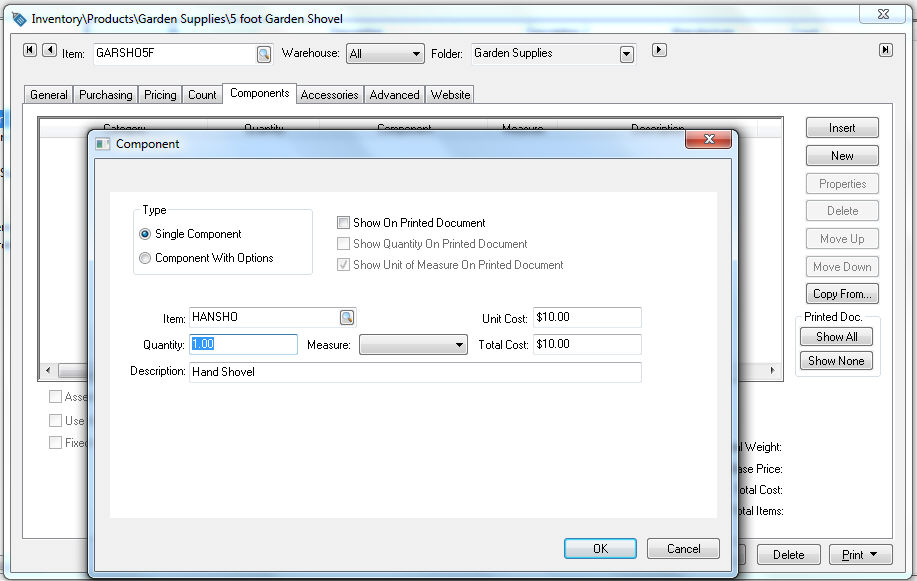
Select the Single Component Type.
Enter the main item into the Item entry.
Disable the Show On Printed Document option to hide the main item.
The Quantity should be done if the associating is one-to-one. Chance the Quantity if the association or secondary part number is a different unit-of-measure. Review the Tracking Counts > Unit of Measure section for more details on using the unit of measure option instead of associated items. The recommended association of items will set the Quantity to 1 and the unit of Measure to the main unit of measure setting on the main item. Click OK to save the component and return to the Component list.
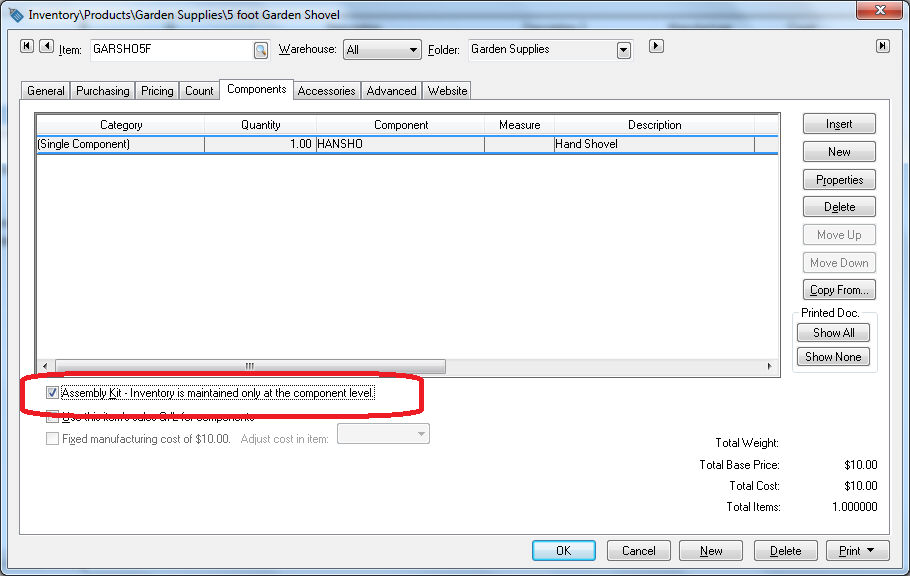
Enable the Assembly Kit option highlighted above. Save the associated item by clicking the OK button.
